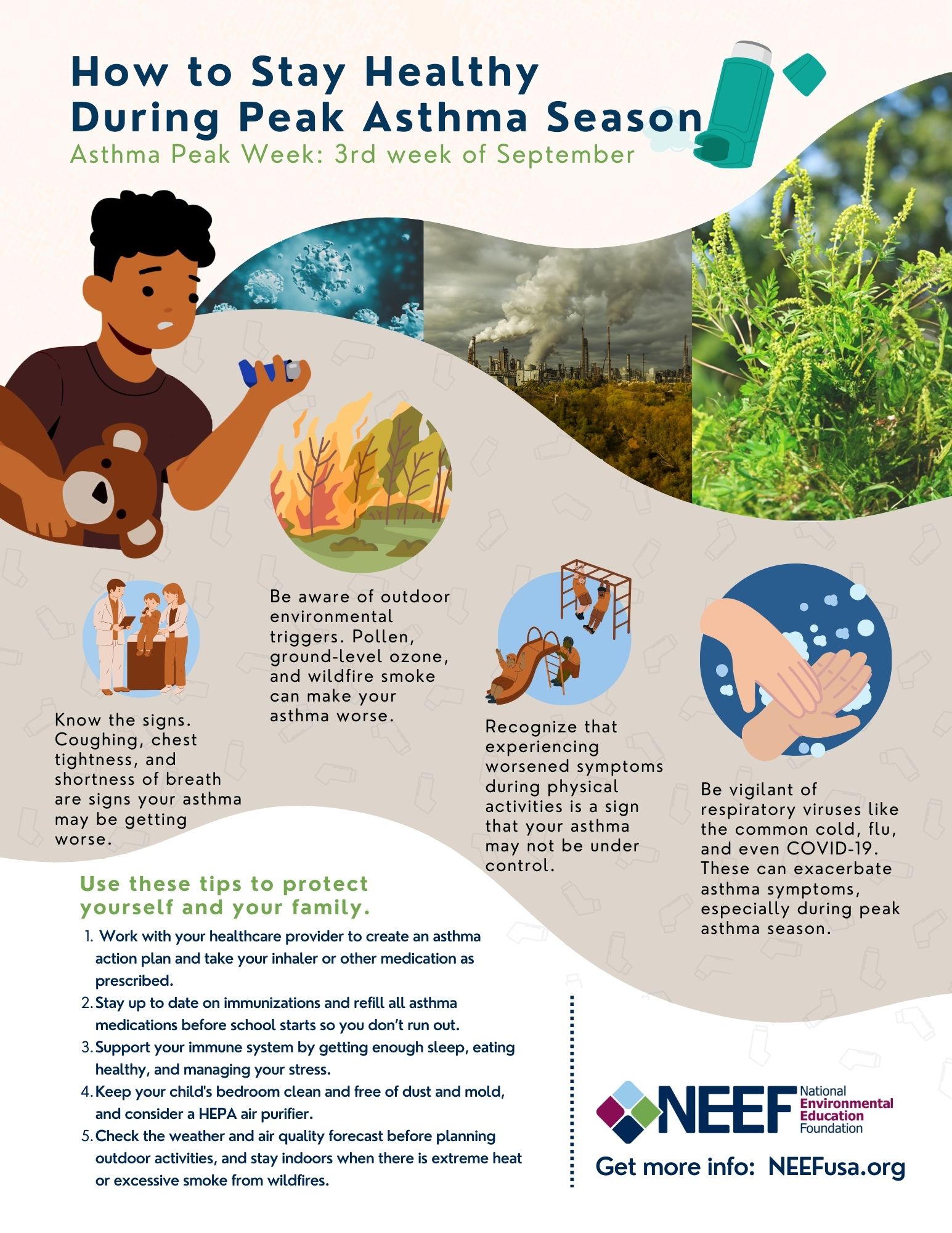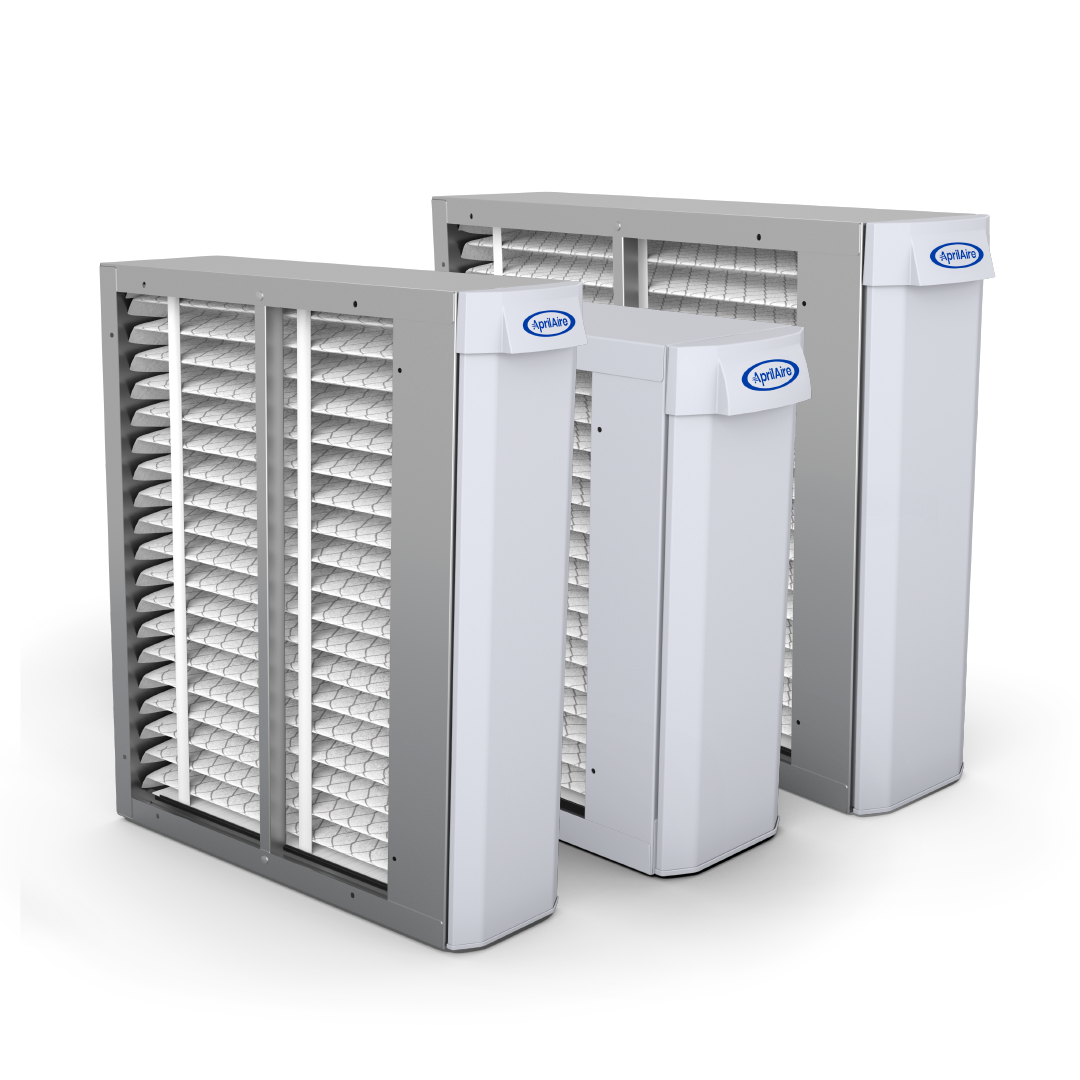Asthma affects millions worldwide. Understanding triggers is crucial for managing it.
Asthma is a chronic condition that makes breathing difficult. Common triggers include pollen, dust mites, pet dander, mold, and air pollution. These allergens can cause asthma attacks, making everyday life challenging. Managing these triggers is essential for better health. This is where air purifiers come in.
They filter out harmful particles from the air, reducing exposure to asthma triggers. Clean air can lead to fewer asthma symptoms and attacks. In this blog, we will explore common asthma triggers and how air purifiers can help you breathe easier. Stay with us to learn more about improving your indoor air quality and managing asthma effectively.

Credit: www.neefusa.org
Introduction To Asthma
Asthma is a chronic condition that affects millions of people worldwide. It involves the narrowing of the airways, making it difficult to breathe. Asthma can be triggered by various environmental and personal factors. Understanding these triggers and finding ways to manage them is crucial for those living with asthma.
What Is Asthma?
Asthma is a respiratory condition marked by spasms in the bronchi of the lungs. It causes difficulty in breathing. It is often linked to allergic reactions or other forms of hypersensitivity. The airways become inflamed and swollen. This leads to symptoms like wheezing, shortness of breath, chest tightness, and coughing.
Prevalence And Impact
Asthma is a common condition affecting people of all ages. According to the World Health Organization, around 235 million people suffer from asthma globally. It is one of the leading chronic diseases among children. The impact of asthma on daily life can be significant. It can limit physical activity, affect sleep, and reduce the quality of life. In severe cases, asthma attacks can be life-threatening.
Given the high prevalence and impact of asthma, managing its triggers is essential. This is where air purifiers come into play. They help reduce indoor pollutants and allergens. This can significantly improve the air quality and reduce asthma symptoms.
Common Asthma Triggers
Many people with asthma face daily challenges. Understanding common triggers can help manage symptoms. Let’s explore some of the most frequent asthma triggers.
Allergens
Allergens are common asthma triggers. They can be found indoors and outdoors. Some common allergens include:
- Dust mites
- Pet dander
- Pollen from trees, grass, and weeds
- Mold spores
Reducing exposure to these allergens is key. An air purifier can help by removing these particles from the air.
Airborne irritants can worsen asthma symptoms. Common irritants include:
- Tobacco smoke
- Strong odors from perfumes and cleaning products
- Air pollution
- Chemical fumes
Using an air purifier can reduce exposure to these irritants. This helps in creating a cleaner environment.
Weather Conditions
Weather changes can trigger asthma symptoms. Some conditions to watch for:
- Cold air
- Hot, humid air
- Windy conditions
Weather can carry allergens and irritants. Keeping indoor air clean with an air purifier can help.
Exercise And Physical Activity
Exercise can trigger asthma symptoms. This is known as exercise-induced asthma. Symptoms include:
- Shortness of breath
- Wheezing
- Coughing
Breathing clean, filtered air during exercise can help. An air purifier can ensure the air is free from irritants.
Identifying Allergens
Identifying allergens in your environment is crucial for managing asthma. Many people are unaware of the common triggers that can worsen their symptoms. Knowing what these allergens are can help you take steps to reduce exposure and improve air quality at home. Let’s explore some of the most common asthma triggers.
Pollen
Pollen is a significant allergen for many individuals with asthma. During certain seasons, trees, grasses, and weeds release pollen into the air. This can lead to respiratory issues. Air purifiers with HEPA filters can capture pollen particles, reducing their presence indoors.
Dust Mites
Dust mites are tiny creatures that live in household dust. They thrive in warm, humid environments. These mites can trigger asthma symptoms. Using air purifiers can help remove dust mites from the air. This reduces their impact on your health.
Pet Dander
Pet dander consists of tiny skin flakes shed by animals. Even if you don’t have pets, dander can still enter your home. This allergen is a common asthma trigger. Air purifiers with HEPA filters can effectively capture pet dander. This helps create a cleaner, healthier living space.
Airborne Irritants
Airborne irritants are common asthma triggers. They are tiny particles or gases that people breathe in. These irritants can worsen asthma symptoms. Using an air purifier can help reduce these triggers. Below are some common airborne irritants and how air purifiers help.
Tobacco Smoke
Tobacco smoke is a major irritant. It contains harmful chemicals that can trigger asthma attacks. Second-hand smoke is also dangerous. Even the smell of smoke can cause problems for asthma sufferers.
Air purifiers can remove smoke particles from the air. They use filters to trap these particles. This makes the air cleaner and safer to breathe. Look for purifiers with HEPA filters. They are best for removing smoke.
Chemical Fumes
Many household items release chemical fumes. Cleaning products, paints, and perfumes are common culprits. These fumes can irritate the airways and trigger asthma.
An air purifier can help. It can remove volatile organic compounds (VOCs) from the air. Choose a purifier with an activated carbon filter. This type of filter is effective at trapping chemical fumes.
Pollution
Outdoor pollution can enter homes. Traffic fumes, factory emissions, and dust are common pollutants. These can cause asthma symptoms to flare up. Indoor air can also have pollutants like mold spores and pet dander.
Using an air purifier can reduce indoor pollution. Look for a purifier that targets particulate matter (PM2.5). These tiny particles can easily enter the lungs. A good air purifier will capture these particles, improving indoor air quality.
| Airborne Irritant | Effect on Asthma | Air Purifier Solution |
|---|---|---|
| Tobacco Smoke | Triggers asthma attacks | HEPA filter |
| Chemical Fumes | Irritates airways | Activated carbon filter |
| Pollution | Causes flare-ups | PM2.5 filter |
Weather And Asthma
Weather changes can impact asthma symptoms. Many people with asthma notice their symptoms worsen with specific weather conditions. Understanding these triggers can help manage asthma better. Air purifiers can be a great tool for asthma management.
Cold Air
Cold air can cause airways to tighten. This makes breathing harder. Asthma symptoms can flare up in winter. Air purifiers can filter out cold, dry air particles. This makes indoor air cleaner and easier to breathe.
Humidity
High humidity levels can be problematic. Humid air can carry mold, dust mites, and other allergens. These can trigger asthma attacks. Air purifiers help by removing these allergens. This keeps indoor air fresh and less humid.
Thunderstorms
Thunderstorms can trigger asthma symptoms. Storms stir up pollen and mold spores. These can get into the air and cause issues. Air purifiers can trap these particles. This reduces the chances of an asthma attack during a storm.

Credit: www.aprilaire.com
Role Of Air Purifiers
Asthma can be triggered by many things. Dust mites, pollen, pet dander, and mold are common culprits. These allergens can make breathing difficult. They can cause coughing, wheezing, and chest tightness. This is where air purifiers come into play. They can help remove these triggers from the air. Let’s explore how air purifiers work and the different types available.
How Air Purifiers Work
Air purifiers clean the air. They use filters to trap particles. This includes dust, pollen, and pet dander. Some use UV light to kill bacteria and viruses. Others use activated carbon filters. These absorb odors and gases. The goal is to reduce the number of allergens in the air.
Types Of Air Purifiers
There are several types of air purifiers. Each works in a different way. Here are the most common types:
- HEPA Filters: These trap small particles. They are very effective against dust and pollen.
- Activated Carbon Filters: These remove odors and gases. They are good for smoke and chemicals.
- UV Purifiers: These use UV light. They kill bacteria and viruses.
- Ionic Purifiers: These release ions. They attract and trap particles.
- Ozone Generators: These produce ozone. They are effective but can be harmful if not used properly.
Choosing the right air purifier depends on your needs. A HEPA filter is great for allergies. An activated carbon filter helps with smells. UV purifiers are best for killing germs. Ionic purifiers can trap many particles. Ozone generators should be used with caution.
Benefits Of Air Purifiers For Asthma
Asthma can be a challenging condition to manage, especially with various triggers lurking around your home. Air purifiers can be a useful tool for asthma sufferers, providing a cleaner and safer living environment. They help by filtering out harmful particles and allergens from the air, making it easier to breathe. Let’s explore the benefits of air purifiers for asthma sufferers.
Reducing Allergens
Air purifiers can significantly reduce allergens in your home. These devices capture dust mites, pet dander, pollen, and mold spores. Allergens can cause asthma symptoms like wheezing and shortness of breath. By trapping these particles, air purifiers can help you breathe easier and reduce asthma attacks.
- Dust mites: Tiny creatures that thrive in bedding and furniture.
- Pet dander: Shed skin flakes from animals that can trigger allergies.
- Pollen: Microscopic particles from plants that cause seasonal allergies.
- Mold spores: Fungal particles that can grow in damp areas of your home.
Improving Indoor Air Quality
Indoor air quality plays a crucial role in asthma management. Air purifiers remove pollutants like smoke, chemicals, and odors. Cleaner air means fewer irritants that can trigger asthma symptoms. Here are some common indoor pollutants that air purifiers can help eliminate:
- Smoke: From cigarettes, cooking, or fireplaces.
- Volatile Organic Compounds (VOCs): Emitted from household products like paints and cleaners.
- Odors: From pets, cooking, or waste.
Using an air purifier can result in significant improvements in your indoor air quality. This can lead to better breathing, fewer asthma attacks, and a healthier living space.
| Benefits | Details |
|---|---|
| Reduces Allergens | Traps dust mites, pet dander, pollen, and mold spores. |
| Improves Air Quality | Removes smoke, VOCs, and odors from the air. |
| Easier Breathing | Reduces asthma symptoms and attacks. |
Choosing The Right Air Purifier
Asthma can be triggered by many things in the air. Dust, pollen, and pet dander are common culprits. An air purifier can help. But you need the right one. Here’s how to choose the best air purifier for asthma.
Hepa Filters
HEPA filters are crucial for asthma sufferers. These filters trap 99.97% of particles that are 0.3 microns or larger. This includes dust, pollen, and smoke. A HEPA filter can significantly reduce asthma triggers.
- Traps very small particles
- Reduces allergens in the air
- Improves air quality
Considerations For Asthma
Not all air purifiers are the same. Look for these features to ensure your air purifier helps with asthma:
| Feature | Benefit |
|---|---|
| HEPA Filter | Captures small particles |
| Activated Carbon Filter | Removes odors and gases |
| Quiet Operation | Reduces noise disturbance |
| Smart Sensor | Adjusts to air quality changes |
Air purifiers with activated carbon filters remove odors and gases. This helps if you are sensitive to smells. Quiet operation is also important. A noisy purifier can disturb your sleep. Smart sensors can adjust the purifier’s speed based on air quality. This ensures the purifier works efficiently at all times.
Choosing the right air purifier can make a big difference. It helps reduce asthma triggers and improves air quality. Consider these features when buying an air purifier for asthma.
Additional Tips For Asthma Management
Managing asthma involves more than just using an inhaler. Understanding common triggers and using air purifiers can make a huge difference. Here are some additional tips to help manage asthma effectively.
Regular Cleaning
Dust and allergens can build up quickly. Regular cleaning reduces exposure to these triggers.
- Vacuum carpets and rugs at least once a week.
- Wash bedding in hot water weekly to remove dust mites.
- Use a damp cloth for dusting instead of a dry one.
- Keep pets out of the bedroom to reduce dander.
Medication And Treatment
Follow your doctor’s instructions carefully. Medication plays a key role in asthma management.
- Take prescribed medication on time, every day.
- Use a spacer with your inhaler to ensure proper dosage.
- Keep a quick-relief inhaler handy for emergencies.
- Regular check-ups with your doctor are essential.
| Task | Frequency |
|---|---|
| Vacuuming carpets | Weekly |
| Washing bedding | Weekly |
| Doctor visits | Monthly |

Credit: www.healthline.com
Frequently Asked Questions
What Are Common Asthma Triggers?
Common asthma triggers include pollen, dust mites, mold, pet dander, and smoke. These allergens can cause respiratory issues.
How Do Air Purifiers Help Asthma?
Air purifiers remove allergens like pollen, dust, and pet dander from the air. This helps reduce asthma triggers.
Can Air Purifiers Remove Pet Dander?
Yes, air purifiers can effectively remove pet dander. This helps people with asthma breathe easier.
Are Hepa Filters Effective For Asthma?
Yes, HEPA filters are effective for asthma. They trap tiny particles like pollen and dust mites.
Conclusion
Asthma triggers can make daily life difficult. Air purifiers help by reducing allergens. Clean air means fewer asthma attacks. Investing in a quality air purifier is wise. Breathe easier and stay healthier. Make your home a safe place. Control triggers and improve quality of life.
It’s a simple yet effective solution.
Rakib Sarwar is a Registered Pharmacist and a reputed health and wellness blogger. He has a great interest in Air purifiers.
